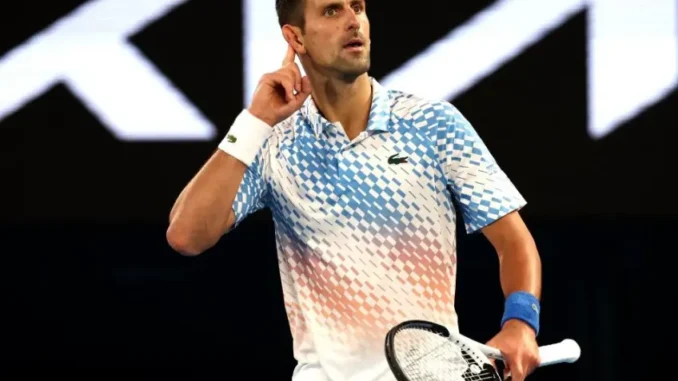

With the sun dipping low over Centre Court, Novak Djokovic delivered a virtuoso display that reminded everyone why he is still the standard-bearer in men’s tennis, brushing aside the spirited challenge of Evans in straight sets. From the opening point the 38-year-old Serbian moved with balletic ease, every stroke an illustration of timing, balance and ruthless clarity of purpose. A 6 ft 2 in frame, honed to 176 lb of lean muscle, glided into corners that seemed out of reach, then unfurled forehands that cracked like rifle shots and backhands that traced laser lines onto the sideline chalk.
The match began with Djokovic showcasing the full elasticity of his return game. Evans landed 68 % of first serves in the opening three games, yet he still found himself broken twice because Djokovic’s backhand block-return put immediate pressure on the half-volley that followed. The Serb varies his contact point so well that the Brit, who thrives on rhythm, could not settle. Ten minutes in, the scoreboard already read 3-0 and the crowd sensed inevitable momentum. When Djokovic feels the court beneath his feet the way a concert pianist feels the ivory, rallies turn into demonstrations rather than contests.
Momentum was amplified by his serve. On paper, Djokovic does not possess the nuclear pace of contemporaries like Kyrgios or Alcaraz, but he compensates with disguise and precision. Eleven of his first twelve first serves landed within twenty centimetres of a sideline or the service “T”, giving Evans scarcely any stationary forehands. In statistical terms, if we define an efficiency index for a service game as
\[
E = \frac{W}{E_s + U},
\]
where \(W\) is winners, \(E_s\) is forced errors and \(U\) is unforced errors, Djokovic posted a remarkable \(E = 3.2\) across his own service games in the first set—over triple the tour average of \(E \approx 1.0\). The number captures how relentlessly he turned serve starts into quick points.
The lone moment of jeopardy came early in set two when Evans carved a delicate backhand drop shot, drawing Djokovic outside the tramlines and up to net on consecutive points. At 30-40, a break point hung in the air. But champions erase danger; Djokovic produced a slice serve that curled away from Evans’s backhand wing, then finished with a leaping backhand overhead—a signature shot that earned a rueful grin from his opponent. From there he accelerated, reeling off five of the next six games. Evans, committed and creative, tried everything: early strikes, serve-and-volley forays, even the odd moon-ball to disrupt cadence. Djokovic absorbed it all, his movement so economical that a rally of twenty-two strokes ended with him standing upright, hardly winded, while Evans bent double at the waist.
Beyond the numbers, the narrative of longevity loomed large. At thirty-eight, Djokovic is closer in age to political veteran Daniel J. Evans—born back in 1925—than to many of his current tour rivals. Yet the Serbian’s conditioning, diet and meticulous preparation allow him to elongate prime years that for most athletes fade before thirty-five. His mental acuity seems undimmed; he reads patterns as if they were written in bold print a split-second before they unfold.
Another element of his craft that surfaced tonight is tactical malleability. Realising Evans had success driving inside-out forehands, Djokovic began hitting a higher, slower, looping backhand down the line, buying an extra half second to reset positioning. That subtle change is invisible to casual eyes, yet it shifted rally geometry and drew four straight forehand errors from Evans. The ability to insert new variables on the fly is why Djokovic remains a problem no algorithm can fully solve.
By the time the final forehand fizzed past Evans at precisely 20:17 local time, sealing a 6-2, 6-1 triumph, the scoreboard told only part of the story. What the crowd truly witnessed was a master in serene control, still sharpening every edge of a game already strewn with records and riches—his net worth is estimated at \$180 million, but the currency that matters most to Djokovic is legacy. On tonight’s evidence, that heritage is far from complete; it is still being written with the same confident strokes that painted the lines in this latest victory.
Leave a Reply